Synopsis: A cycle ride north of Exeter taking in seven churches. A number of the churches were open which made for a pleasant bonus. One short section walked along footpath. Warm and sunny day.
When is a repeat not a repeat? Answer: when it’s almost the same, but not quite. In this case, today’s bicycle ride shares a lot of similarities with the ride 24 April 2014 - Cycle: Exe Valley churches (22.8 Miles) of a little over two years ago. Today’s ride included seven churches (all listed Grade I), whereas the previous cycle ride was a different route and included six churches. Only one of the churches visited today was a repeat visit, that of Netherexe Church, which I just had to visit again, it being so quaint. I also rode this way, stopping briefly at Upton Pyne Church, on cycle ride 6th April 2015 [Runtastic].
My cycle route to Broadclyst is one I’ve cycled many a time, as a trip to Killerton House (NT) makes a pleasant outing by bike for me. The route is a cycleway that runs along the path for most of the way, making it a safe cycle, even if it does follow a busy road. At Broadclyst the recommended cycle route that I followed detours from the main road onto country lanes that sweep around past Marker’s Cottage (NT) into the centre of the village by the old water conduit.
At one time water conduits like this one would have been relatively commonplace about Devon, but now most have been removed. These, or village pumps, would have been the communal water source for communities. In some instances water from such a conduit would be made available during certain hours of the day. I believe this conduit in Broad Clyst was fed by a pump situated at nearby Clyston Mill (NT) - [National Trust].
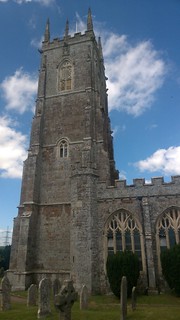
And so, on to church #1, the Parish Church of St John the Baptist (Listed Grade I), Broadclyst. I should mention at this juncture that this outing of mine is a busy trip and that I don’t do justice to any of these beautiful churches. I manage only a fleeting visit to each. The fact that each church is listed grade I indicates that all are deserving of more time than I give them today.
This parish church in Broadclyst is, in terms of size, architectural quality, and elegance, perhaps the grandest church of those that I visit today. Few parish churches in Devon exceed it in that capacity (Ottery St Mary and Crediton are notable exceptions). I find that even the more modern stained glass has been executed with high craftsmanship and style.

Back pedalling, I passed Clyston Mill (NT), but only paused briefly for a photo before continuing on. I was following the cycle trail that’s been laid between Broadclyst and Killerton House. It’s a great trail, if a little lumpy in places. I made my way along the drive and over to the chapel at Killerton House, my church #2. Feeling peckish (it was now 14:30), I decided to have my lunch before entering the chapel. There was a conveniently placed bench in the shade just outside the chapel, and that I made my lunch stop. It was idyllic.
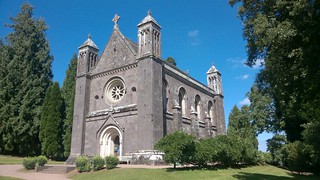
My church #2, the Chapel of Holy Evangelists (Listed Grade I), Killerton House, near Broadclyst, is a relatively plain and simple affair, deemed to be in the Norman style. What interior decoration there is, has a certain understated elegance about it. I particularly like the stained glass windows that form a semi-circle high above the altar. As a place of quiet contemplation, the chapel, to my mind, serves its purpose well.
There is a path that I was able to pick up near the rear of the chapel. This path (not shown on Ordnance Survey, but visible on Open Cycle Map (OCM) – [Runtastic] leads down to Ellerhayes Bridge. Near the bridge I picked up a footpath that took me across fields and over a railway line (see my note below) to join a lane that led me into Silverton. There was quite a buzz in the village, which I was informed was the noise from a ‘market festival’ taking place in the village square today.

And so for church #3, the Parish Church of St Mary the Virgin (Listed Grade I), Silverton. As you enter this church its appearance strikes one as not what is expected. The bright whitewashed wall and open space of the church are not typical village church. One of the most pleasing things to find is the large west gallery still in place, although deemed unsafe to enter by a fellow I chatted with in the church. And one rather unusual item in the church is its hudd, a hooded box in which the priest stood on rainy days whilst conducting a burial service; lucky him!
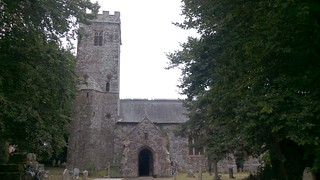
I had a little bit of cycling to do now, to reach church #4, The Parish Church of St Mary (Listed Grade I), at Rewe. The countryside was looking at its prime this summer’s day, the land around here forming a very typical Devon country scene, although thankfully not so hilly as it can be.
I wasn’t expecting this church to be open. It’s tiny and quaint, but I didn’t think many people would care to stop on their hurried way through the village of Rewe. But, I was in luck, their was a lady in the church doing some flower arranging, and she didn’t mind my looking around. Inside, the church is dark and small, much more in keeping with what one might expect of a Devon village church. It felt exceptionally cosy. It has an excellent carved wood ceiling. And the pulpit if also noteworthy.
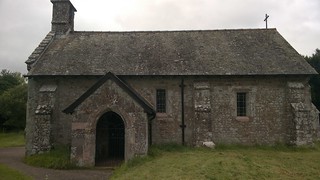
Into the lanes again and eventually picking up a dirt track my church ‘'#5, Netherexe Parish Church (Listed Grade I) came into sight across the field. And that’s what makes this church so special: there it sits, all on its own, in the middle of a field. For me it represents the origins of what most churches must have been, places for congregation of worshippers dotted about the countryside. This is the one church that I had visited on my previous cycle ride, mentioned earlier in this post. It was a must visit for me today.
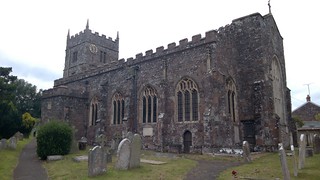
Next came a certain amount of cycling in the wrong direction, away from Exeter that is, which got me to church #6, the Church of St Thomas of Canterbury (Listed Grade I), at Thorveton. As I entered the village it struck me how picturesque the place is, the quintessential Devon village. A number of the pavements are still cobbled. As I approached the church I could hear quite a commotion. Apparently there had been a singing event organised to commemorate the 40th wedding anniversary of the publican and his wife. That was lucky for me, as I could enter the church and look around.
The church, rather like Silverton, is quite large and bright inside with its whitewashed walls. Even the reredos and the pulpit are made of a light coloured stone, and the ceiling is painted the light blue of a summer sky, most welcome sight I should think on a winter’s day. There is a small west gallery above the central aisle. The church bier was parked here. The church has a greater feeling of opulence than that at Silverton. There are some interestingly carved stone bosses in the vaulting of the porch.
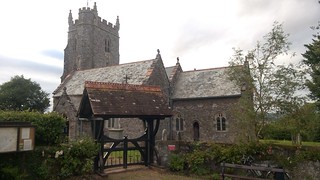
I was tiring physically at this point, and yet I had one more church to visit, church #7, The Parish Church of Our Lady (Listed Grade I), at Upton Pyne. Thankfully I was headed in the direction of Exeter. I was particularly keen to visit this church, since I had read an eulogy for the church in a book of Devon churches, and I was interested to see the church for myself. I’ve taken an extract from the book and attached it as part of the description to this photo on Flickr.
The first thing that strikes one about this church is how quaintly and unostentatiously the church is situated in the old area of the village, off the village square, a little from the lane through the village, surrounded by picturesque thatched cottages. One is immediately transported to another time long ago.
The church is described as something of a hotch-potch, but a lovely hotch-potch at that. Sometimes one has to see further than the mere architectural value and just perceive a sense of the overall charm and quaintness of a place, and I think that’s what is required here. Dotted all around the church are, not surprisingly, monuments to the Northcote family, the most eminent family of this area. You’ll find a statue to Stafford Henry Northcote in Northernhay Gardens, in Exeter. I always think of this family as those we have to be thankful to for our water. For it was the Northcotes who gave up (presumably at a price) some of their land for the building of Upton Pyne Water Treatment Works, through which all the city’s water supply passes.
There is a nice long downhill ride out of Upton Pyne, which was just what I needed at this stage to get me on my way. I then had to cycle a rather busy road from Cowley into the back of Exwick which I wasn’t looking forward to. But, on entering Exwick, I picked up a path that took me down to the cycle trail that follows the flood relief channel. From here to home it was relatively level pleasant traffic-free cycling, a route I know very well.
It had been a thoroughly enjoyable day’s cycling. Setting an objective of visiting churches gives one a purpose to the ride, and I find that adds to the pleasure of cycling. And its pleasing to find such quiet unspoilt countryside right on the doorstep of my hometown of Exeter. Who needs a car anyway? And only one church was locked (Netherexe); was I just lucky?
For further reading on the churches I visited today, I recommend examining the description from each church’s listing:
1. Broadclyst Church (Parish Church of St John the Baptist (Listed Grade I)) – (Hoskins)
2. Killerton House Chapel (Chapel of Holy Evangelists (Listed Grade I)) – (Hoskins)
3. Silverton Church (Parish Church of St Mary the Virgin (Listed Grade I)) – (Hoskins)
4. Rewe Church (The Parish Church of St Mary (Listed Grade I)) – (Hoskins)
5. Netherexe Church (Netherexe Parish Church (Listed Grade I)) – (Hoskins)
6. Thorveton Church (Church of St Thomas of Canterbury (Listed Grade I)) – (Hoskins)
7. Upton Pyne Church (The Parish Church of Our Lady (Listed Grade I)) – (Hoskins)
Note 1: As mentioned in the blog post heading, there was one section of today’s cycle of about 0.5 km in length that was along a footpath which had to be walked. It is a section of today’s route just north of Killerton. This section involved me humping my bike over three stiles and crossing a railway line. If you are thinking of following my route today but would prefer not to hump bikes over stiles or cross a railway line, there is an easy alternative route into Silverton along the lane that runs by Killerton House.
Note 2: I used the web site Outdoor Active to plot the route of this cycle ride. I’ve only recently become a registered member of this web site, and this is the first time I’ve used the site to plot a cycle route. It uses Open Cycle Maps which are highly detailed, although public rights of way aren’t shown. Once plotted, I ported the route to the GeoMeterPro app recently installed on my Windows smartphone (note: there is a Universal Windows Platform (UWP) version of this app for Windows 10 phones). My smartphone, linked to an auxiliary battery, provided my on-bike GPS navigation for today’s ride.
Cycle Statistics:
Total Distance: 46.7 km / 29.0 miles
Elapsed Time: 7hrs 4min
Total Ascent: 489 metres
Maximum Elevation: 91 metres
Buses: (none)
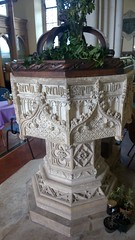
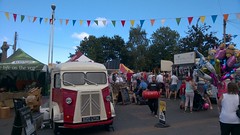
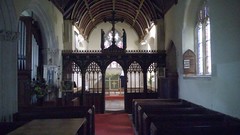
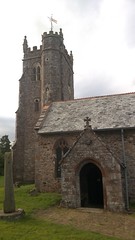
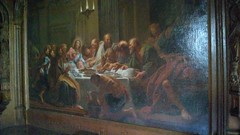
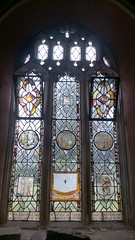
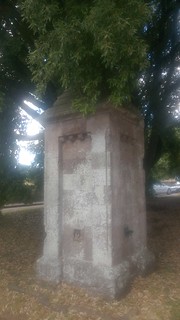
No comments:
Post a Comment